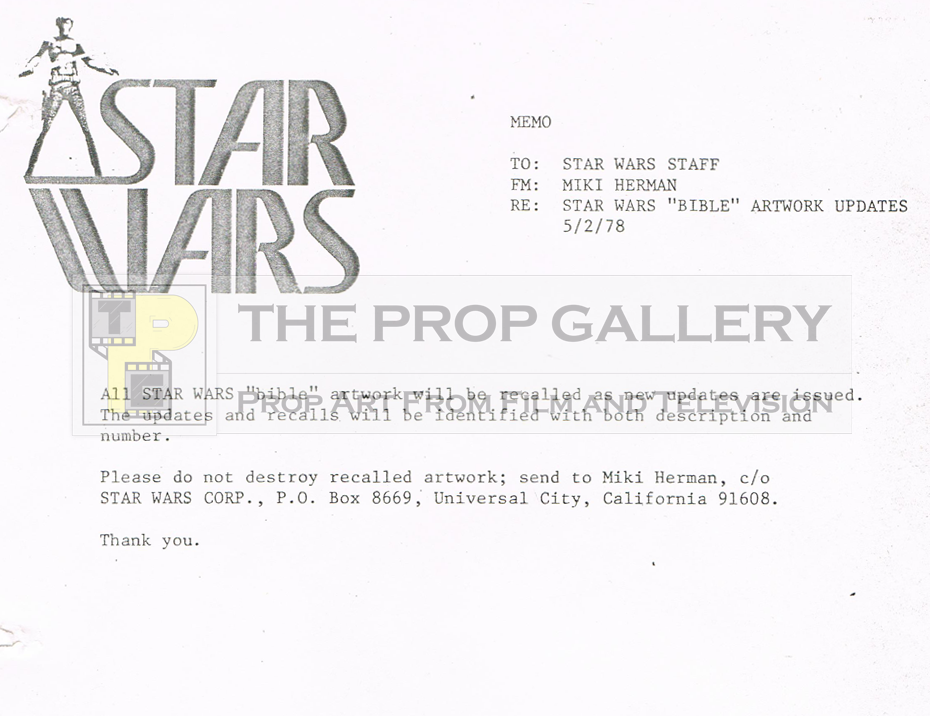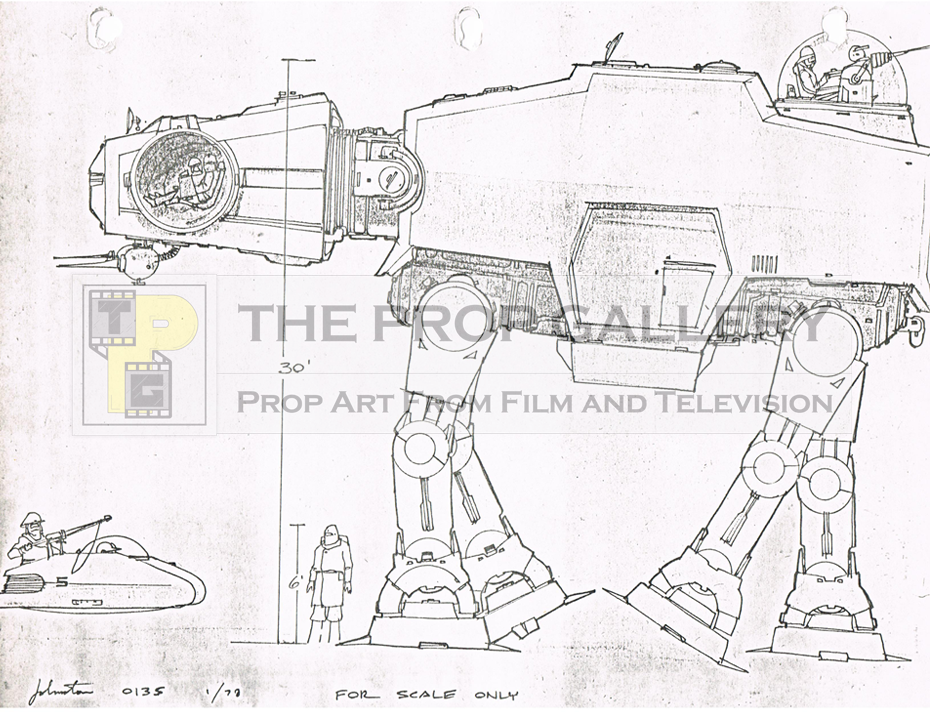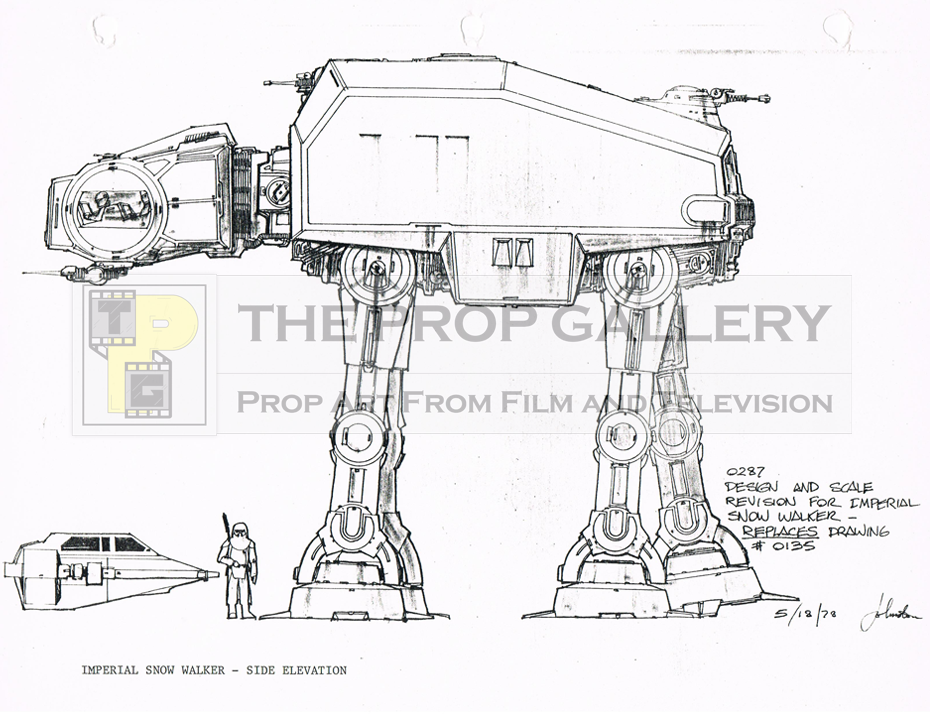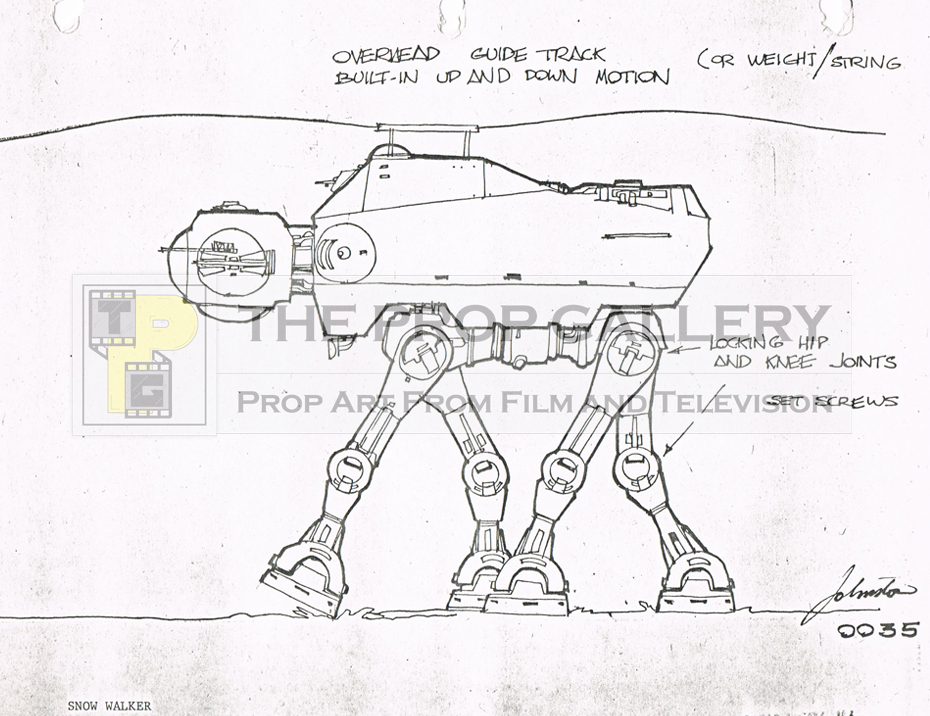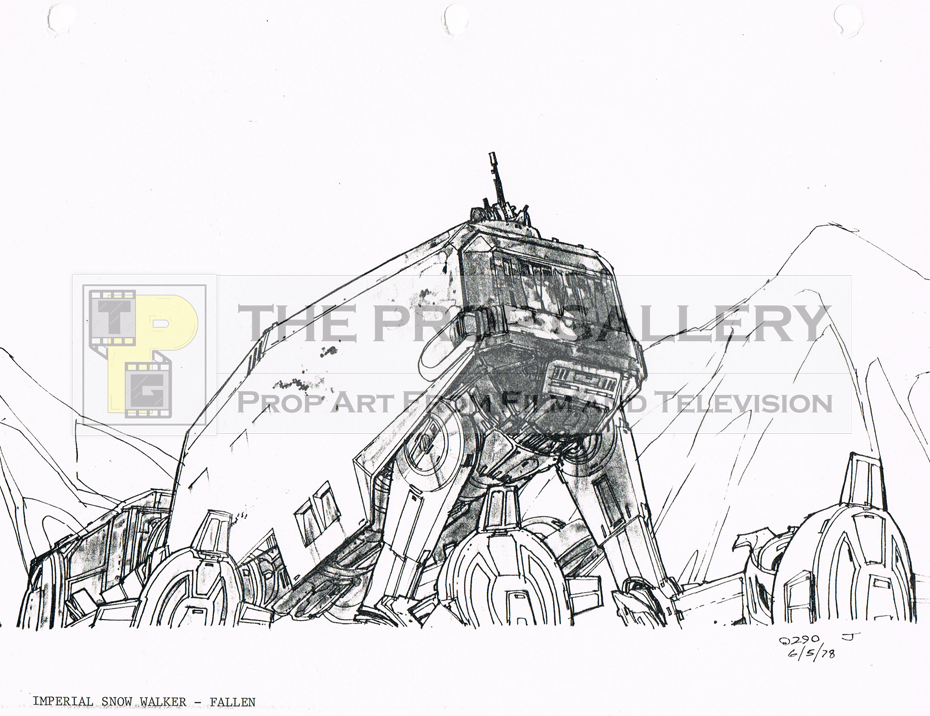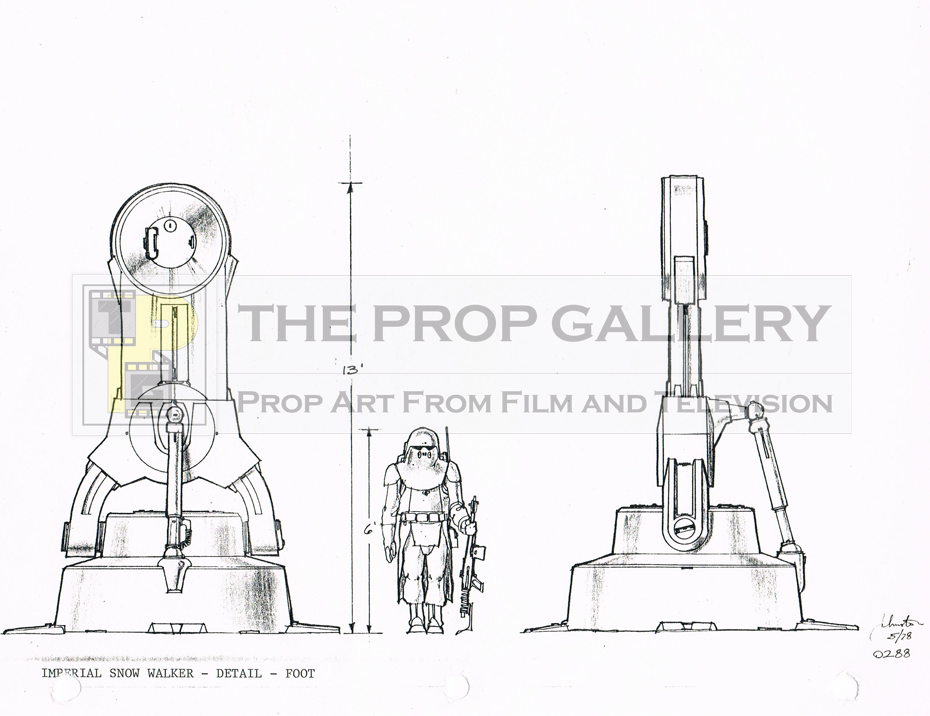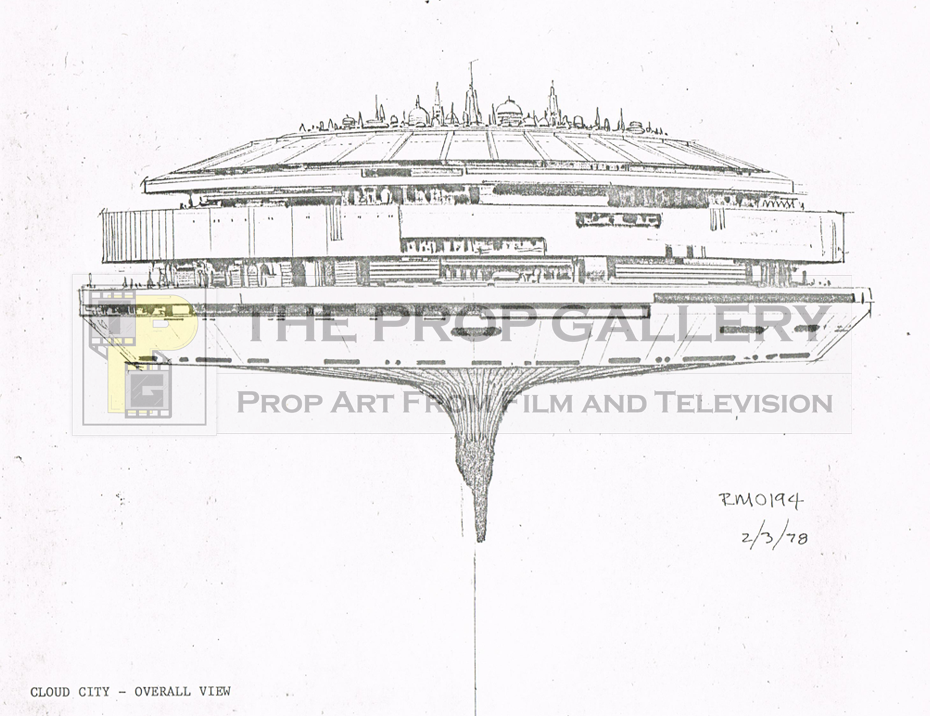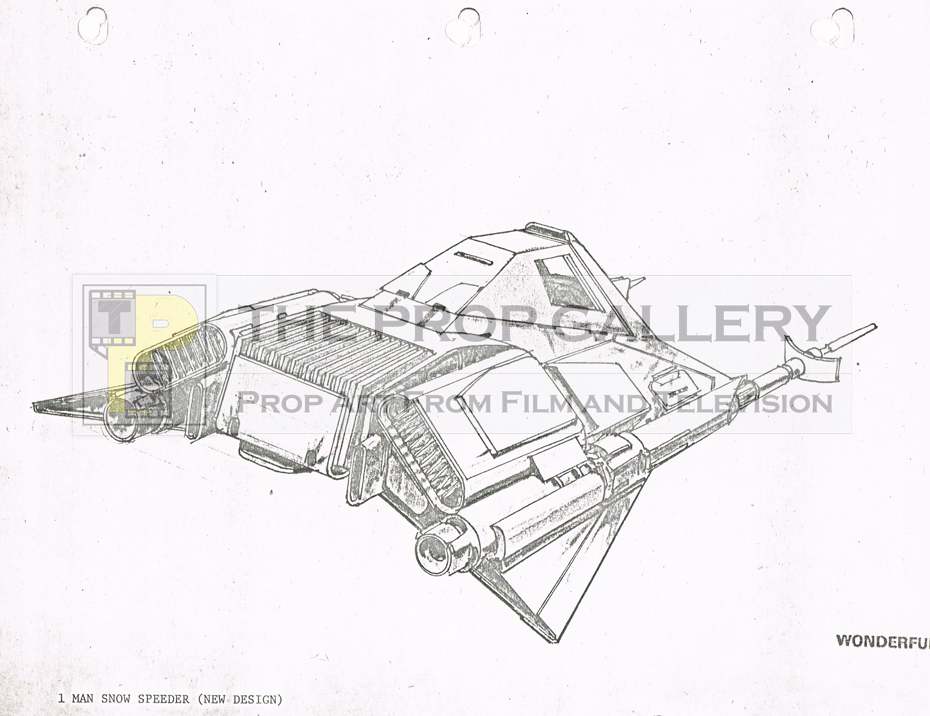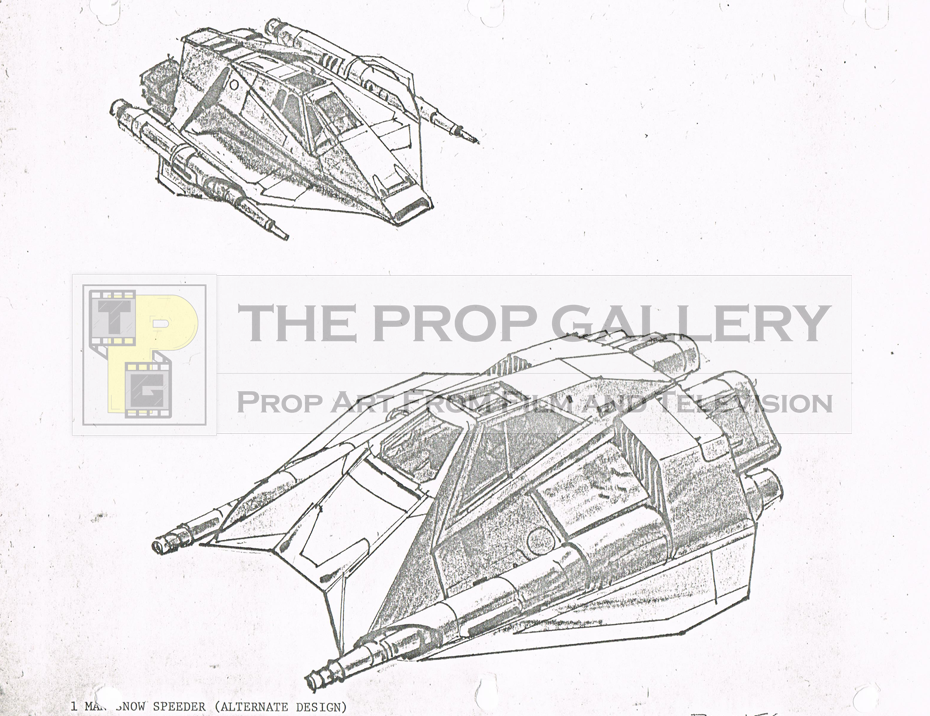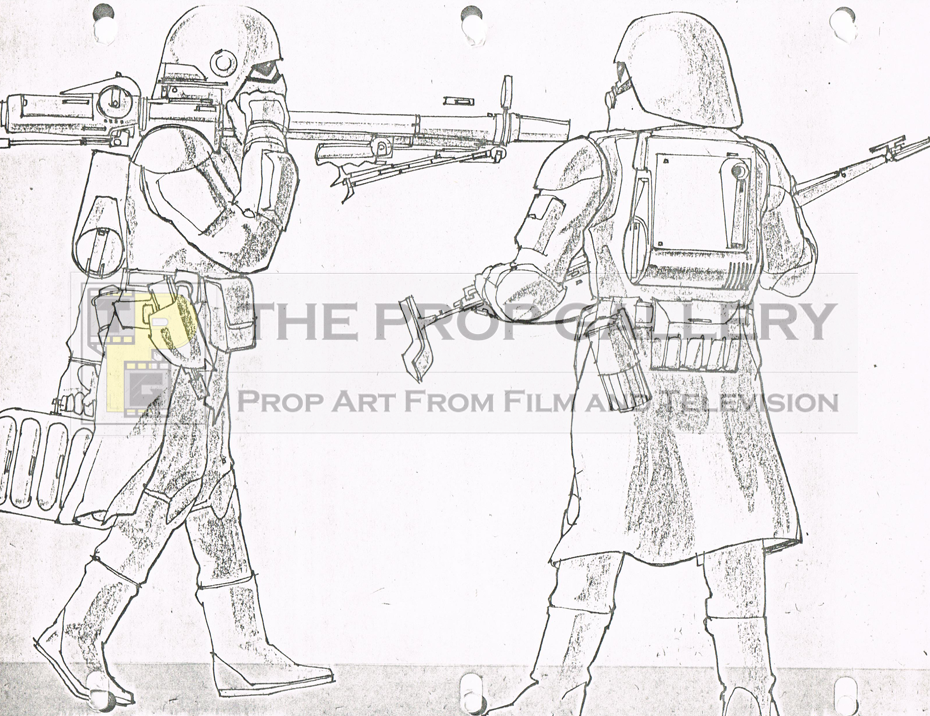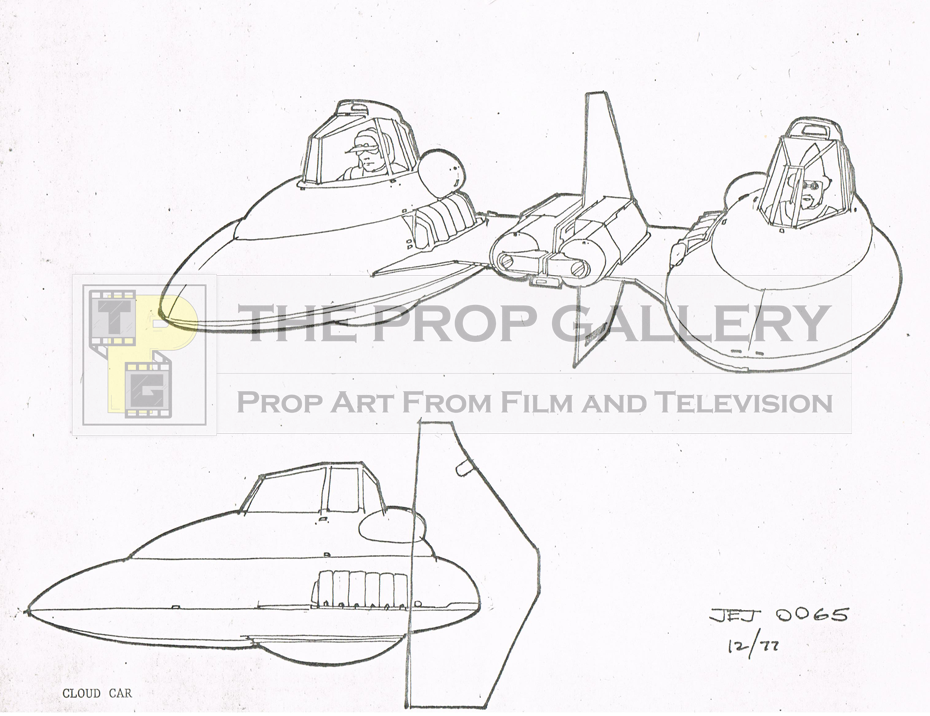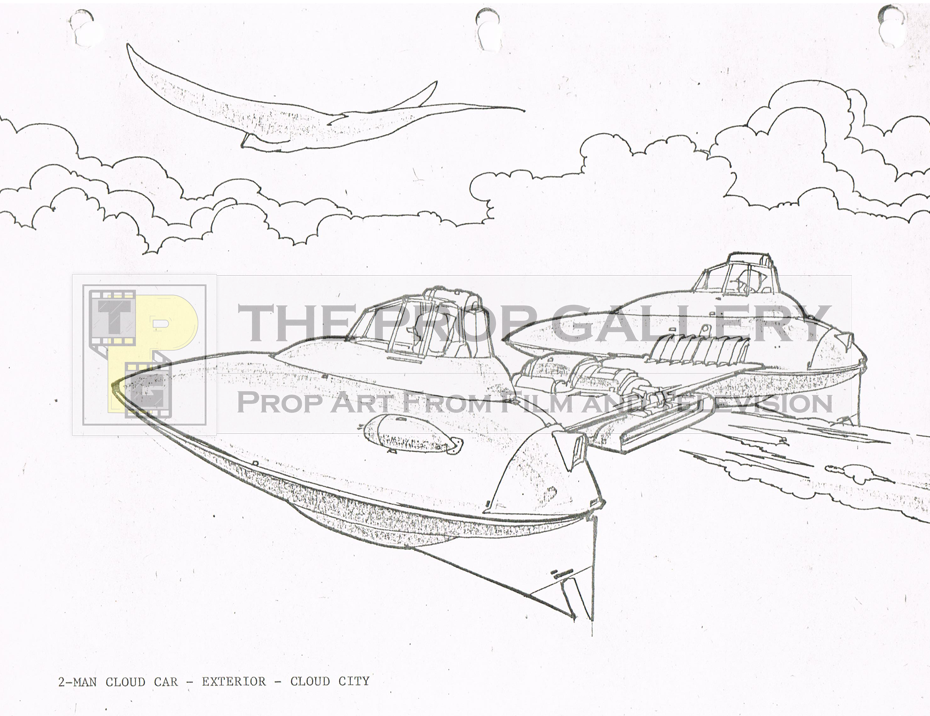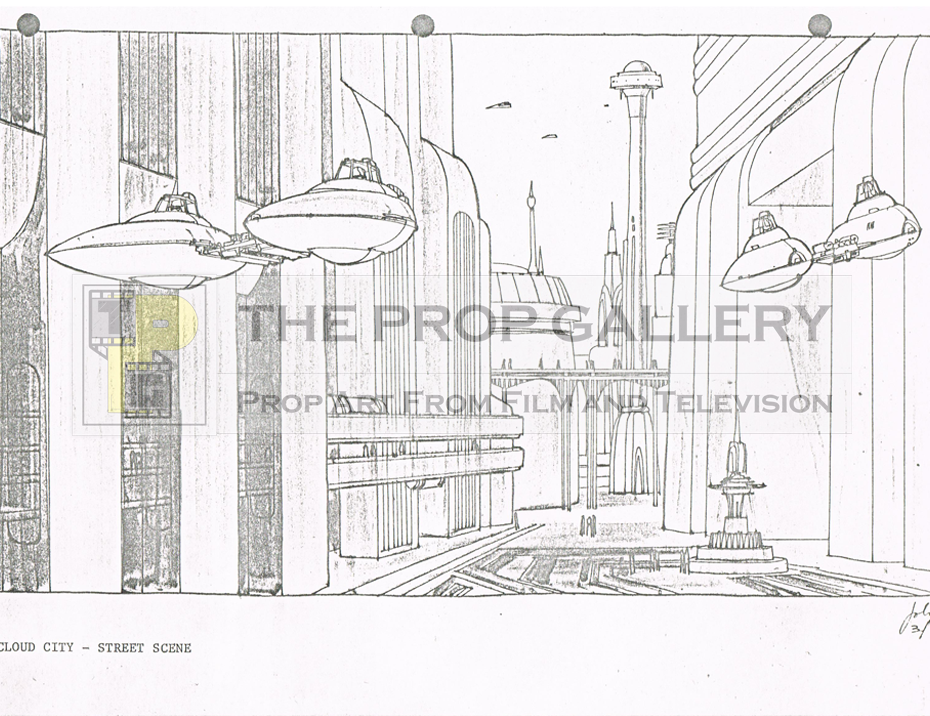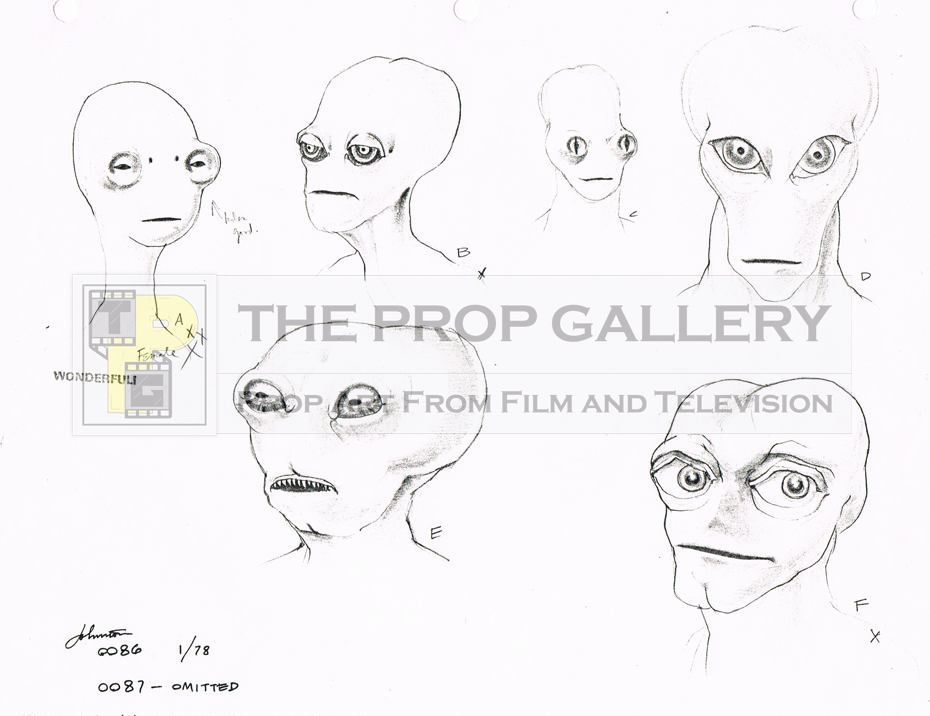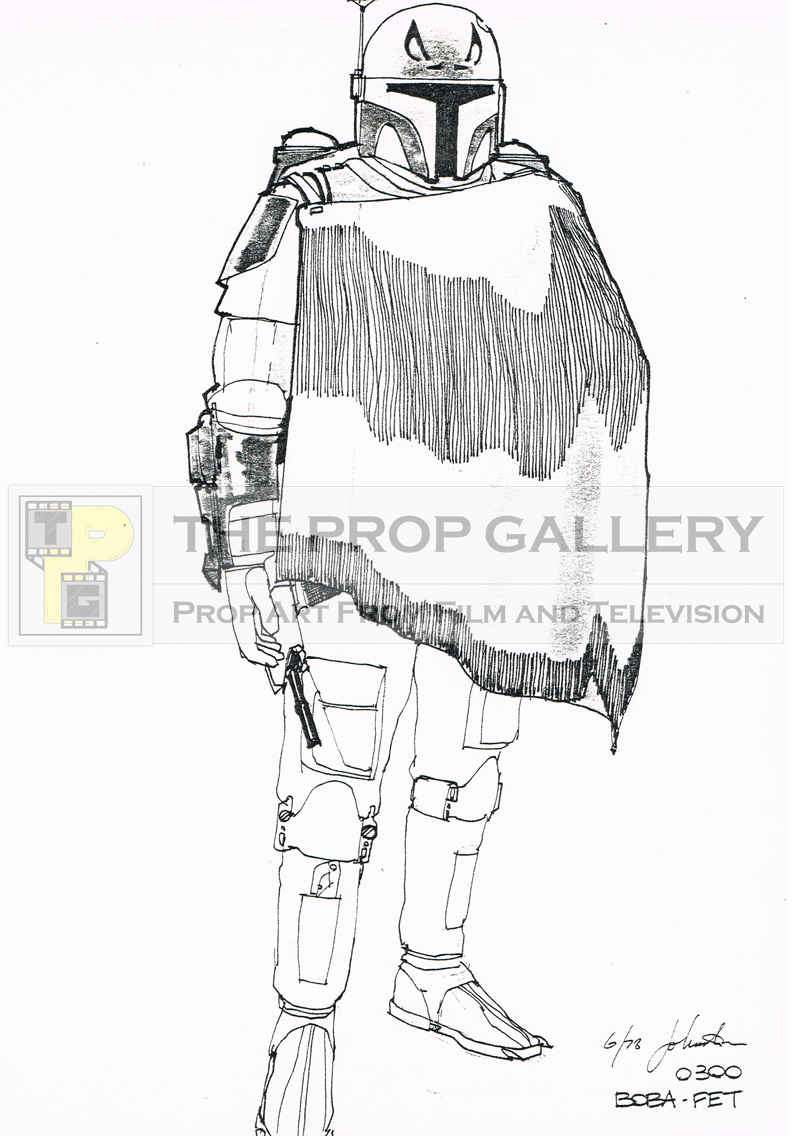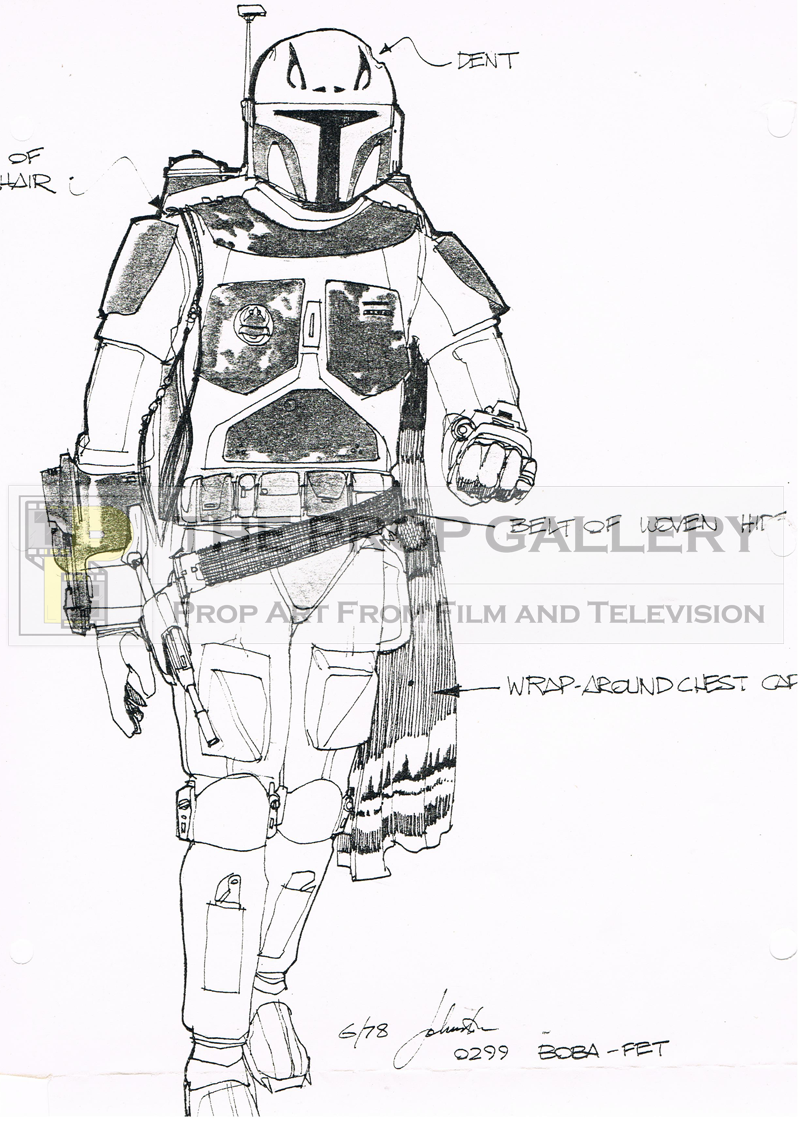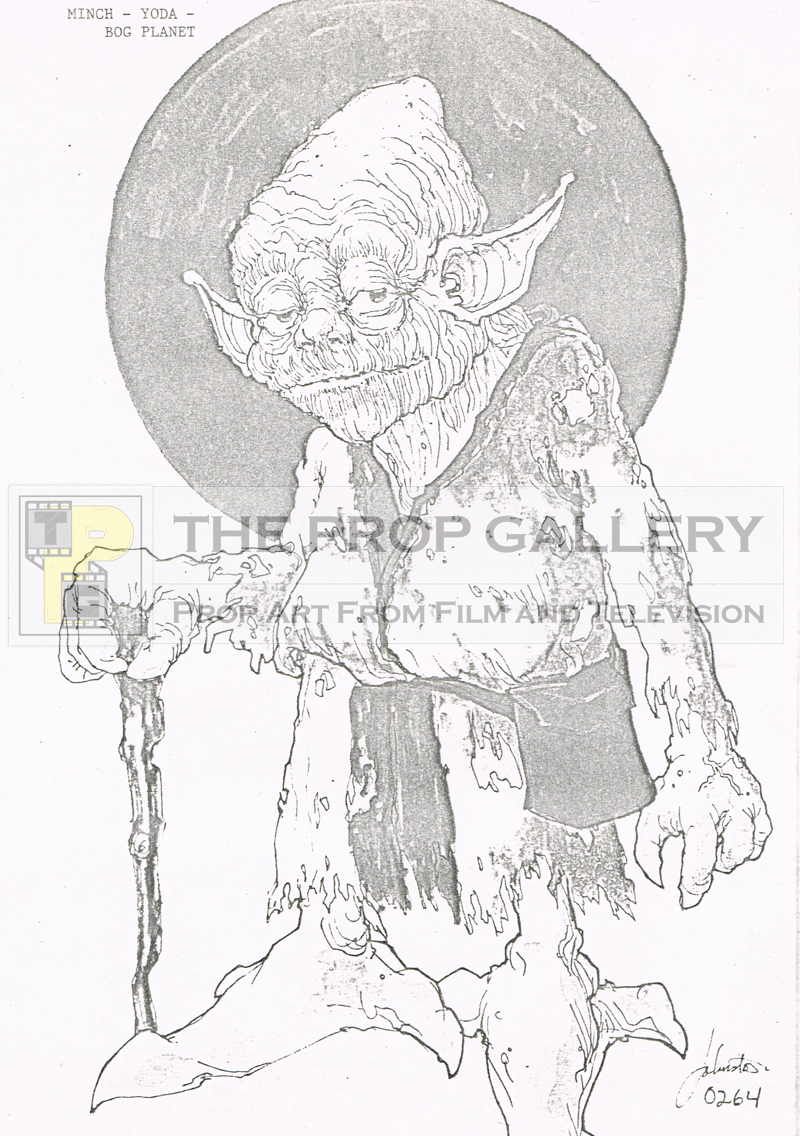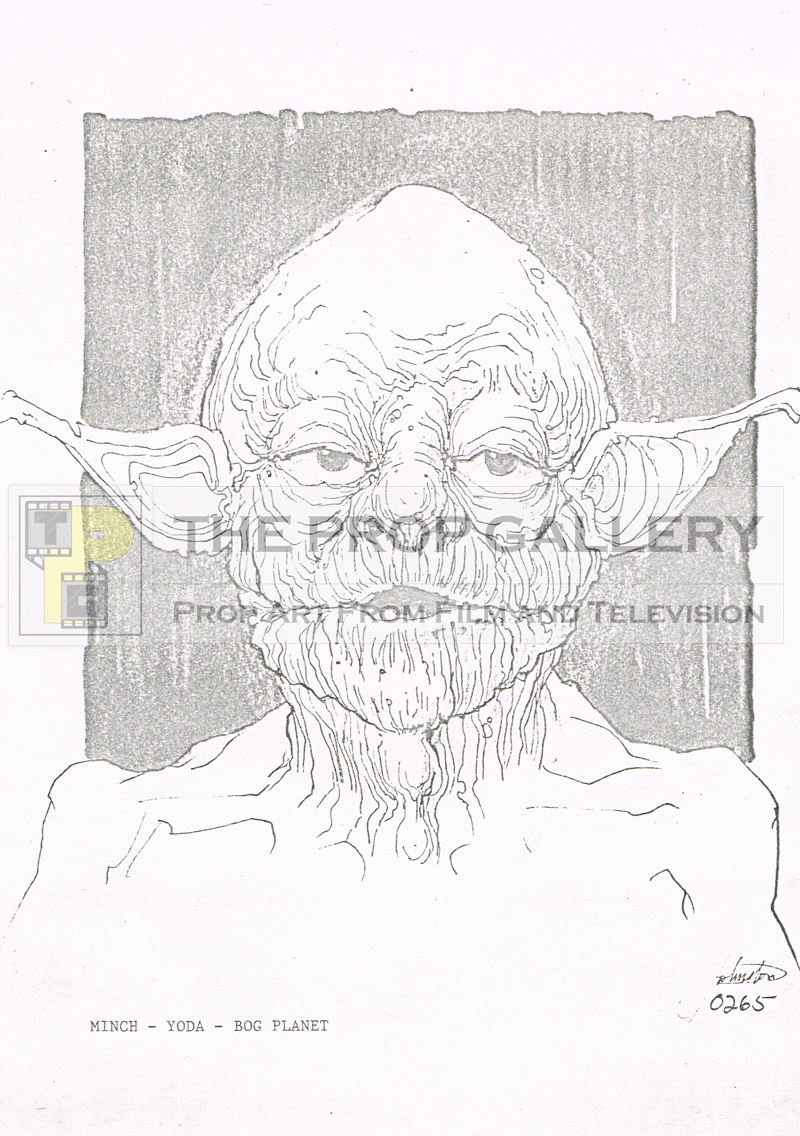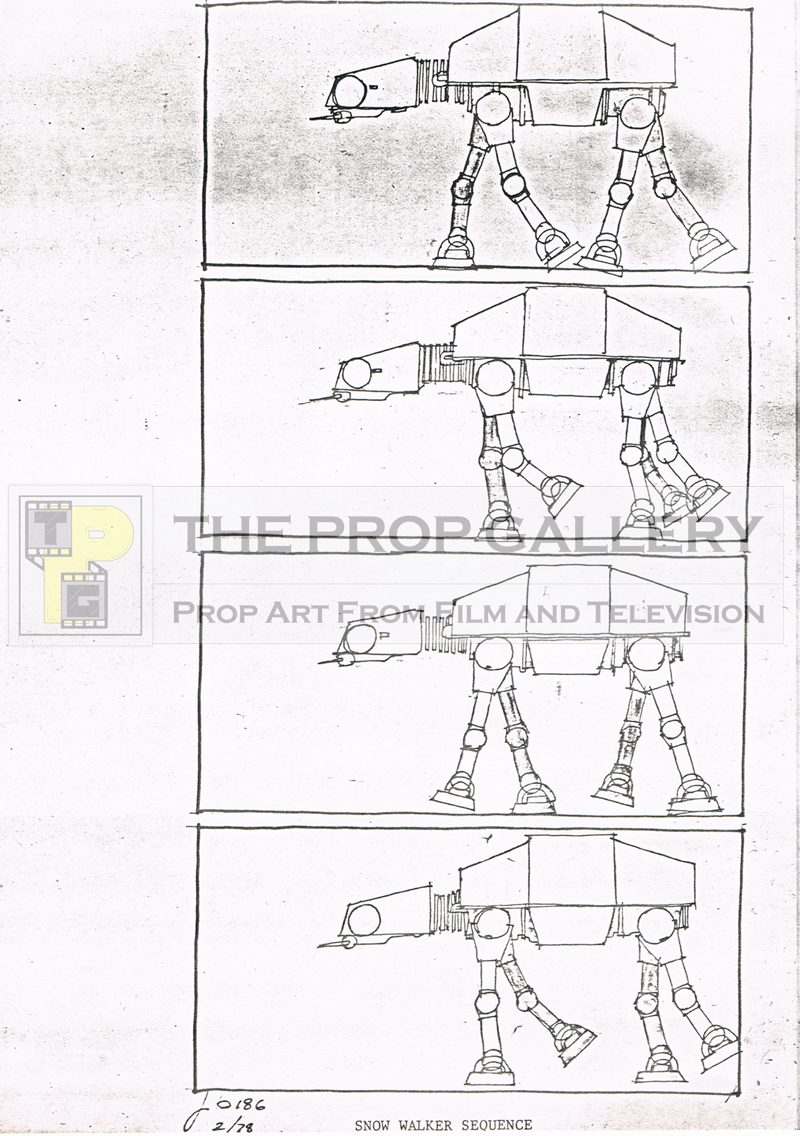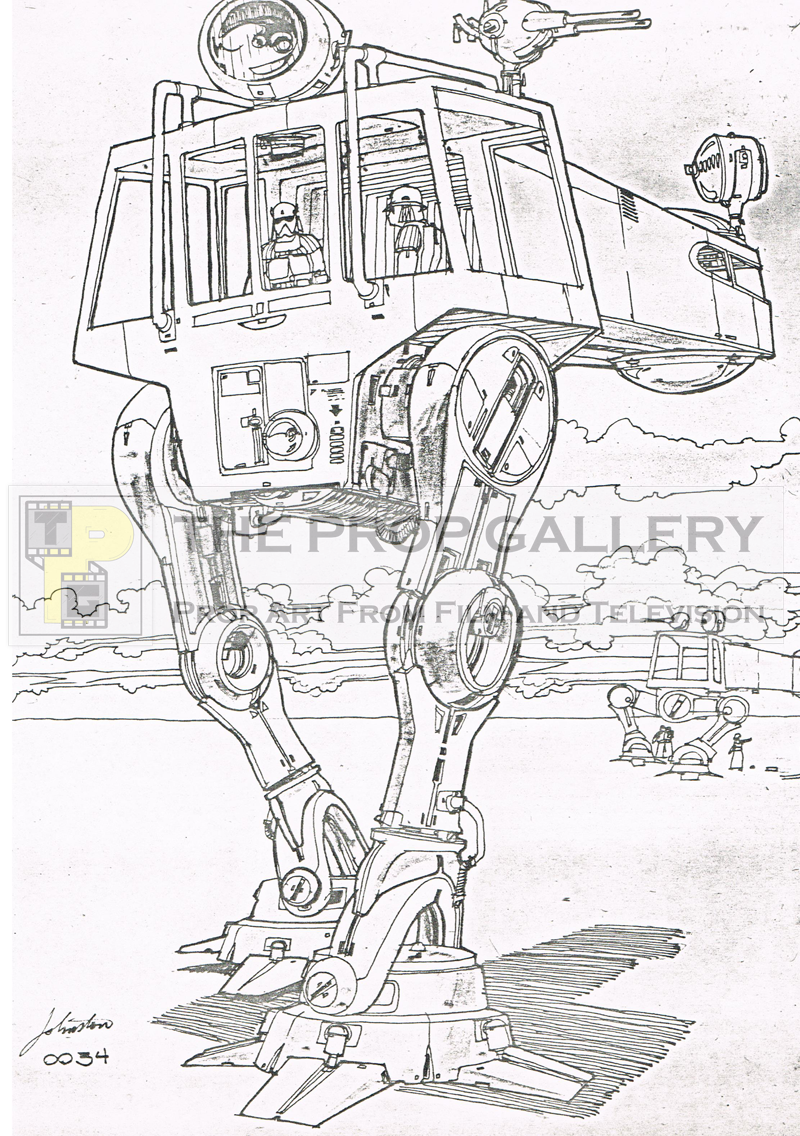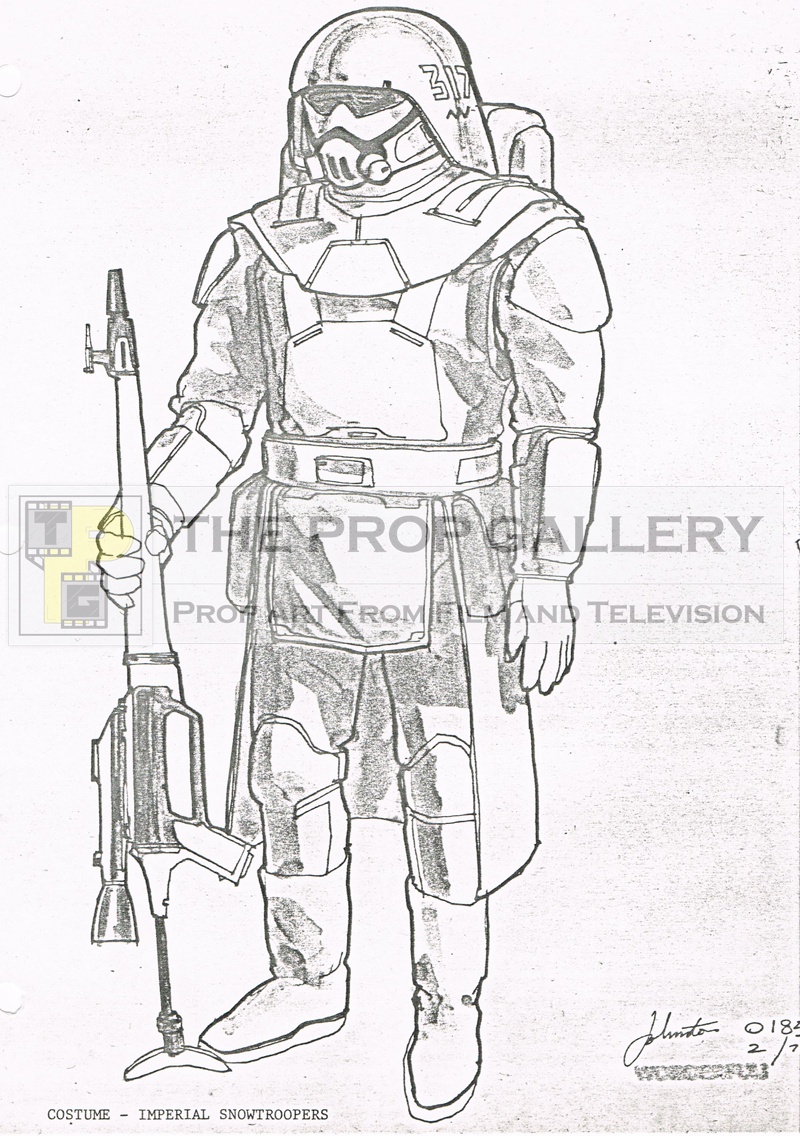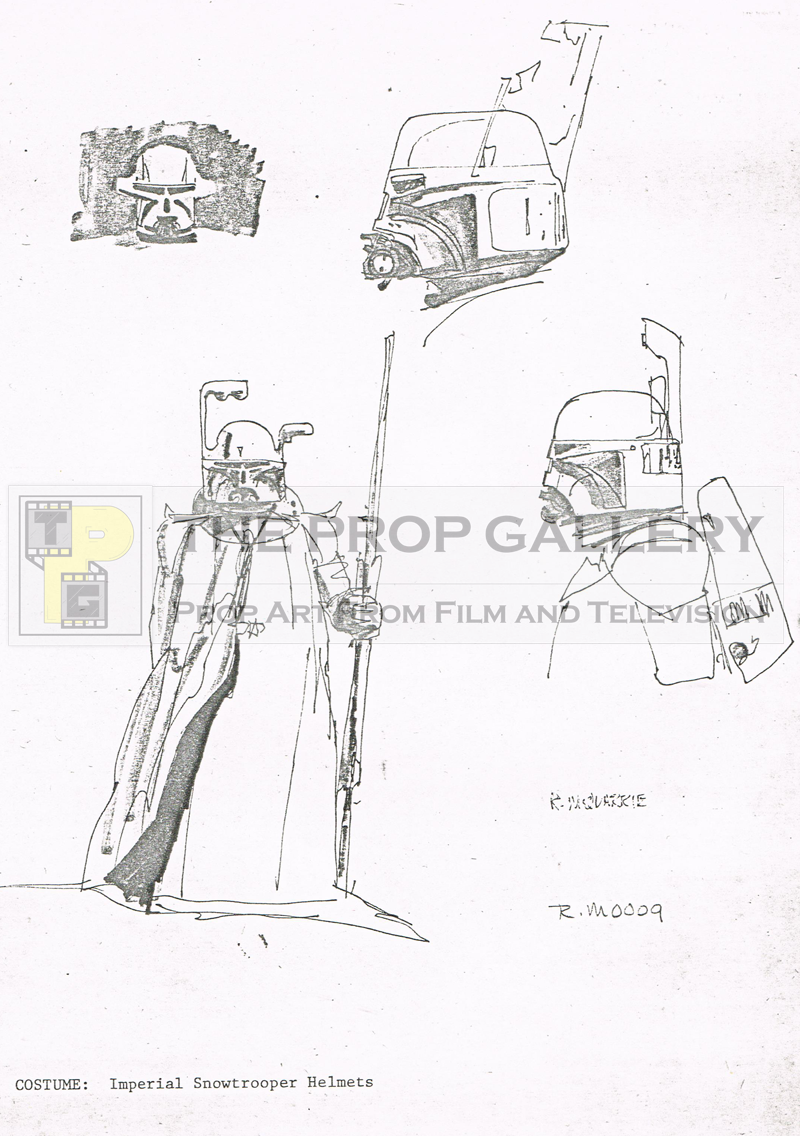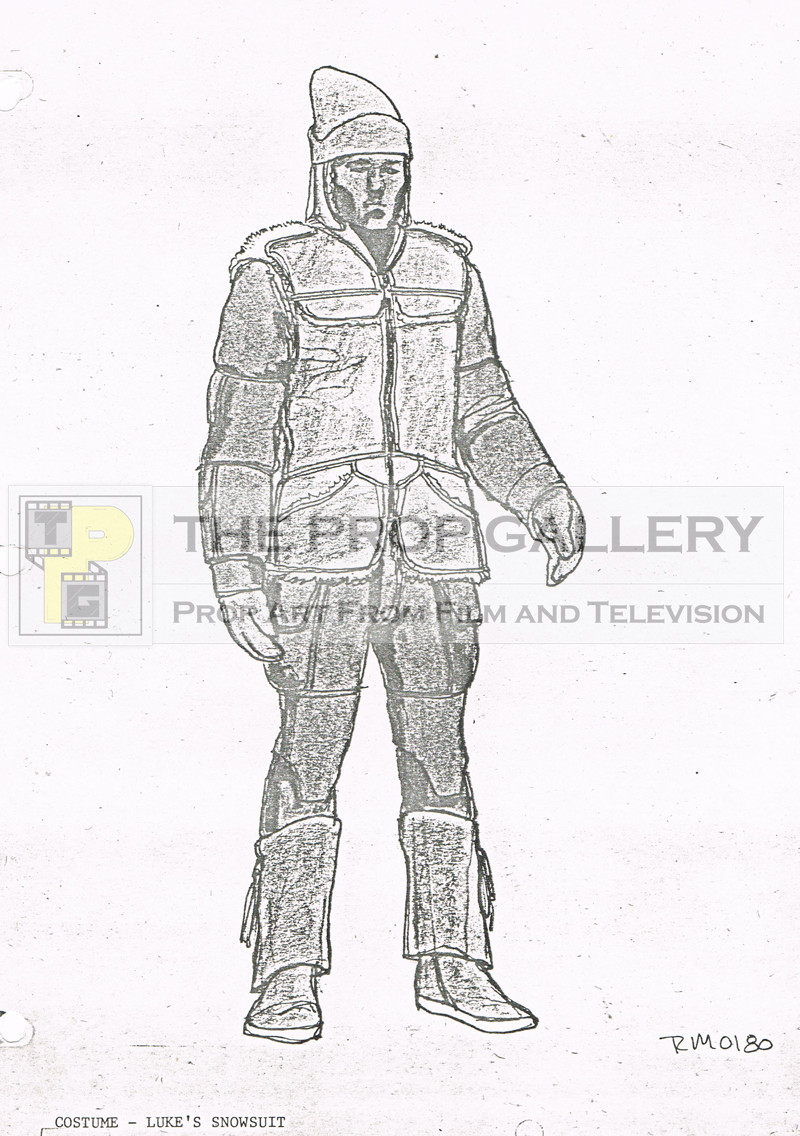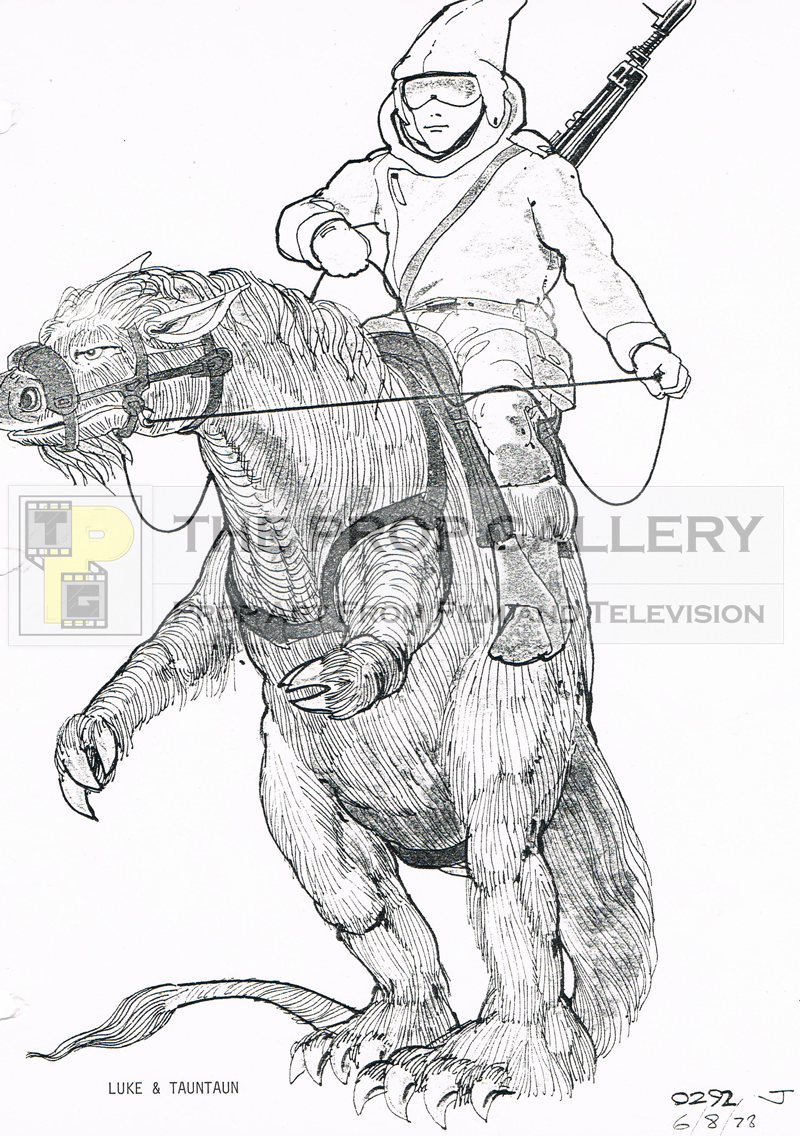In detail - The Empire Strikes Back production bible
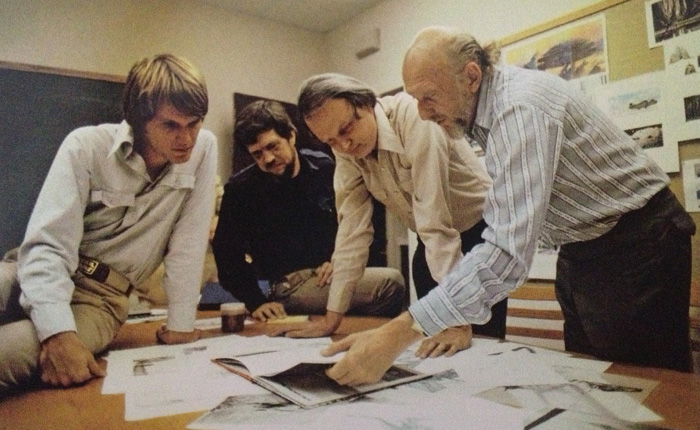 1977 saw the release of Star Wars sparking the birth of a science fiction phenomenon and one of the most extensive media franchises of all time. Much of its success can be attributed to the incredible design work, largely by conceptual artists Ralph McQuarrie and Joe Johnson coupled with stunning visual effects sequences produced by Industrial Light & Magic headed by John Dykstra, Star Wars quickly became in international smash hit surpassing Steven Spielberg's Jaws as the highest grossing film of all time. In September 1977 director George Lucas signed a contract with Twentieth Century Fox to produce a sequel called 'Chapter II' which would later become The Empire Strikes Back.
1977 saw the release of Star Wars sparking the birth of a science fiction phenomenon and one of the most extensive media franchises of all time. Much of its success can be attributed to the incredible design work, largely by conceptual artists Ralph McQuarrie and Joe Johnson coupled with stunning visual effects sequences produced by Industrial Light & Magic headed by John Dykstra, Star Wars quickly became in international smash hit surpassing Steven Spielberg's Jaws as the highest grossing film of all time. In September 1977 director George Lucas signed a contract with Twentieth Century Fox to produce a sequel called 'Chapter II' which would later become The Empire Strikes Back.
Lucas was aware that visual continuity from Star Wars to its sequel was key to its success and with this in mind he once again hired the services of McQuarrie and Johnston who set about designing much of the expanded universe we see in Empire and rebuilt the Industrial Light & Magic effects team headed up by Brian Johnson and Richard Edlund. Between late 1977 and early 1979 concept designs for various characters and craft underwent many changes and refinements at the hands of the concept artists with production bibles given out to a number of senior production staff which contained the constantly changing vision of the film. These production bibles contained the concept designs and illustrations covering all aspects of the picture from the varying snow walker and snowspeeder designs to alien and costume designs, throughout the production many designs were omitted and replaced with updated versions.
The Empire Strikes Back premiered at the London Odeon on May 20th 1980 garnering worldwide recognition, it became the highest grossing movie of 1980 and went on to win a Special Achievement Academy Award for best visual effects with many fans and critics placing it as thier favourite film of the Star Wars saga.
What follows is a small selection of the concept designs contained within the production bible.
A memo from production co-ordinator Miki Herman dated 5/2/78 instructing production staff who have bibles to return any recalled artwork to her.
A scale concept of the imperial snow walker, with rear gunner, drawn by Joe Johnston in January 1978. This was recalled and should have been omitted from the binder in July 1978 as the rear gunner idea was scrapped.
A further imperial walker concept by Joe Johnson from May 1978, note the different shaped body, absence of dome around the rear gun and the addition of a gun to the front. This concept replaced #0135 seen above right.
Another Joe Johnston imperial walker concept design detailing the motion and joints. The miniatures used were constructed by Industrial Light & Magic and filmed using stop motion animation, the walker movements were based on reference footage taken of an elephant filmed by effects director of photography Dennis Muren.
A Joe Johnston sketch of a fallen imperial snow walker dated June 1978.
This is Johnston's concept for the imperial walker feet detail, in scale with a snowtrooper with the legs noted as standing 13 feet high. Dated May 1978.
A Ralph McQuarrie concept drawn in February 1978 depicting Cloud City, McQuarrie also produced a number of matte paintings.
An early concept design for a one man snowspeeder drawn by Ralph McQuarrie in January 1978, the design was later fettled by Joe Johnston and realised on screen with a number of ILM produced miniatures for flying shots and a number of full size props built for the hanger, interior cockpit and crash shots.
Different elevations of an alternative snowspeeder design by McQuarrie drawn in January 1978.
Two elevations of an early imperial snowtrooper costume design and accessories by Joe Johnston drawn circa February 1978.
An early Joe Johnston cloud car concept design dated December 1977.
An early cloud car concept scene drawn by Joe Johnston circa December 1977.
A Cloud City street concept scene with cloud cars drawn by Joe Johnston in March 1978.
An early Joe Johnston concept for the cloud planet aliens dated January 1978, this was later to be omitted from the production bible in July 1978.
Boba Fett with pancho concept design by Joe Johnston dated June 1978, the pancho was inspired by Clint Eastwood's costume in A Fistful of Dollars (1964).
A further Boba Fett concept design also dated June 1978 showing the chest pack and detailed with annotations relating to various elements of the costume including the dented helmet.
Early Minch Yoda design by Joe Johnston circa spring 1978, at this point questions were being raised how the Jedi Master would be realised on screen, dressing up a monkey was even considered.
A further Minch Yoda design by Johnston circa spring 1978, Yoda was ultimately bought to life by a combination of make-up artist Stuart Freeborn who sculpted him, based partly on himself, and puppeteer Frank Oz who also voiced the now iconic creature.
Snow walker sequence by Joe Johnston dated February 1978 demonstrating the movement concept.
A very early two legged walker concept by Joe Johnston circa winter 1977, this idea was soon taken over by the four legged walkers but the idea was not scrapped altogether.
An Imperial Snowtrooper costume concept by Joe Johnston dated February 1978.
Early Imperial Snowtrooper concepts by Ralph McQuarrie paying particular attention to the helmet which later inspired that of Boba Fett.
A Ralph McQuarrie costume concept for Luke's snowsuit.
Luke on Tauntaun concept design by Joe Johnston dated 6/8/78.
Click here to view our current inventory of original pieces from The Empire Strikes Back.

